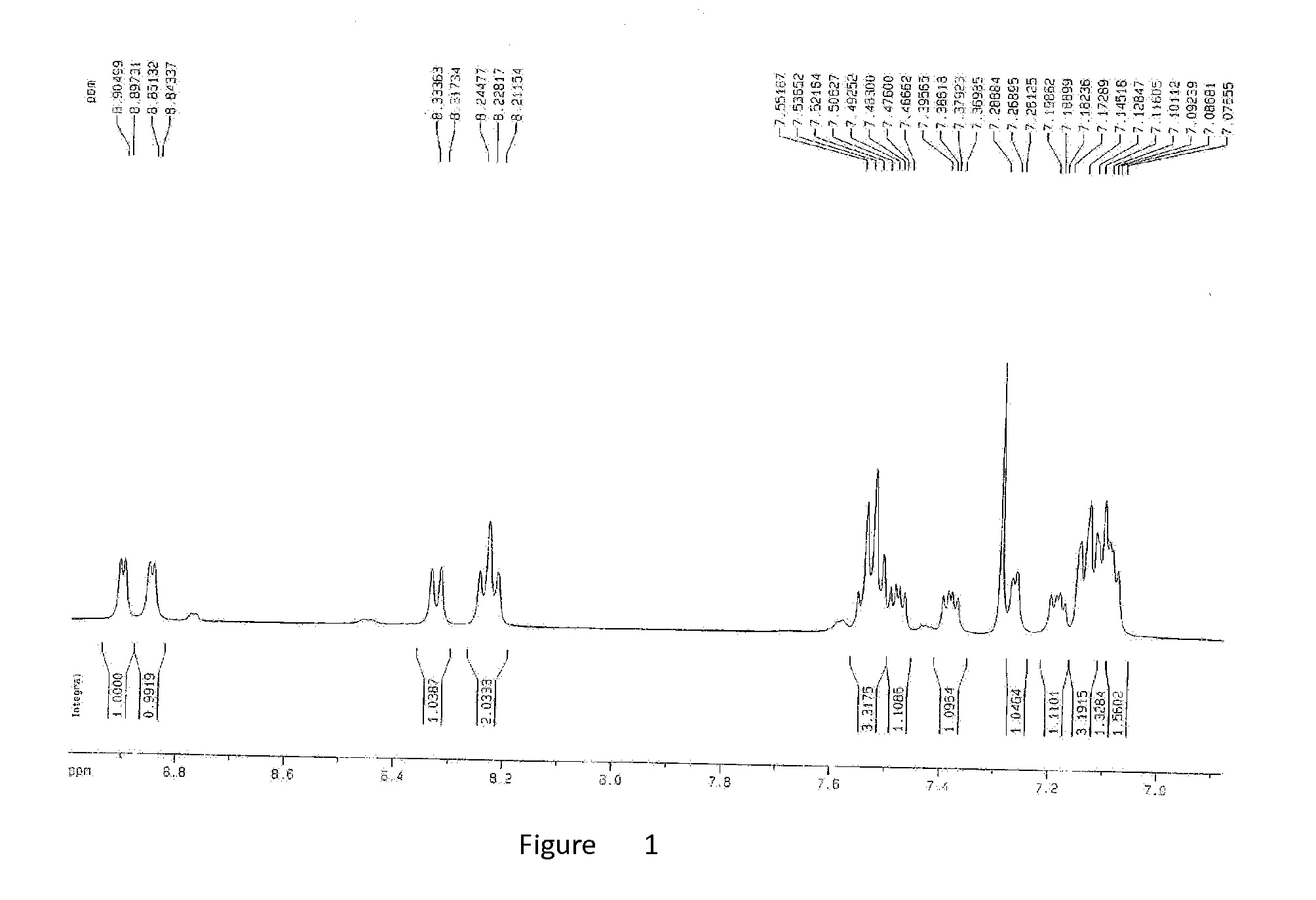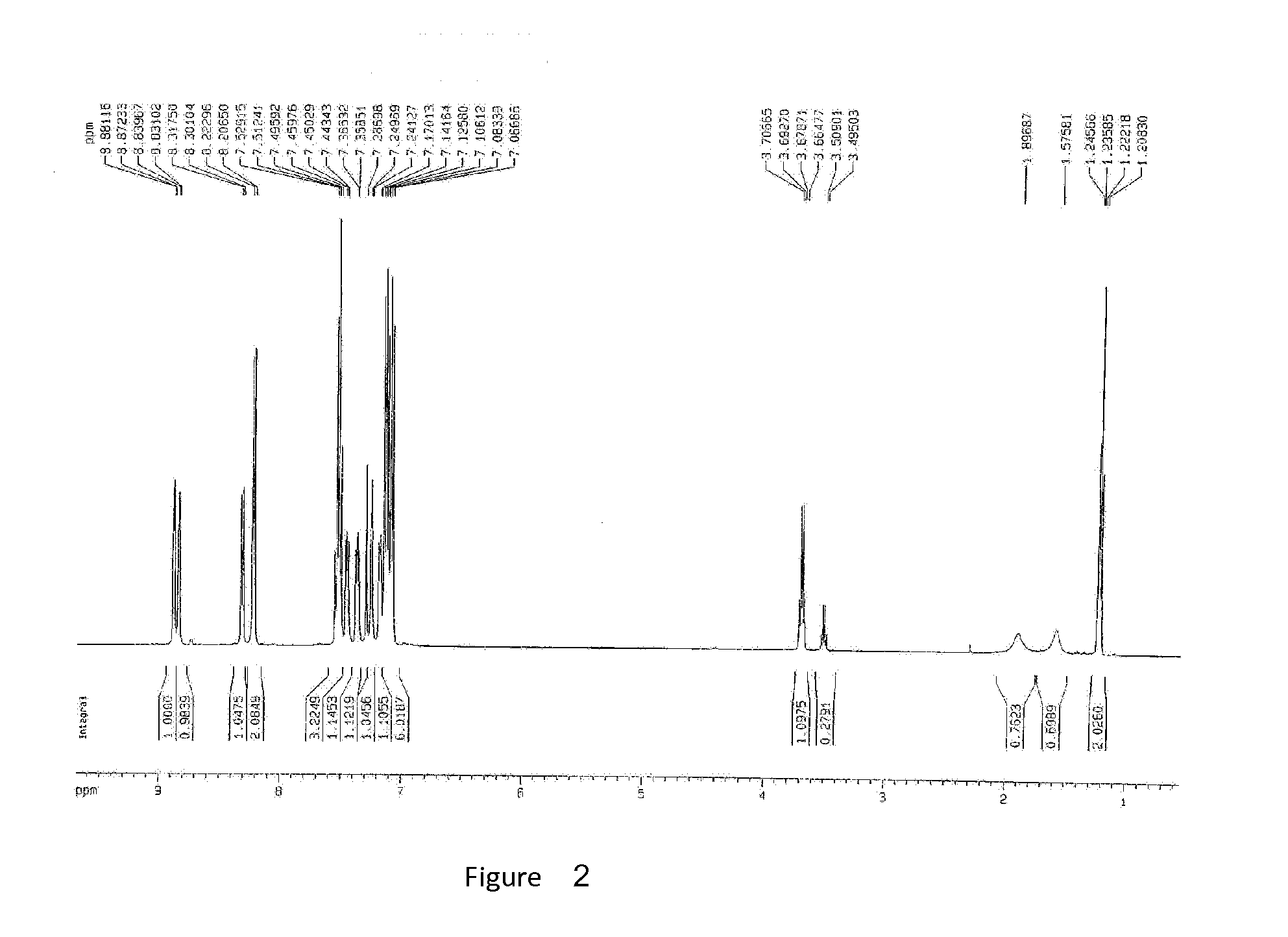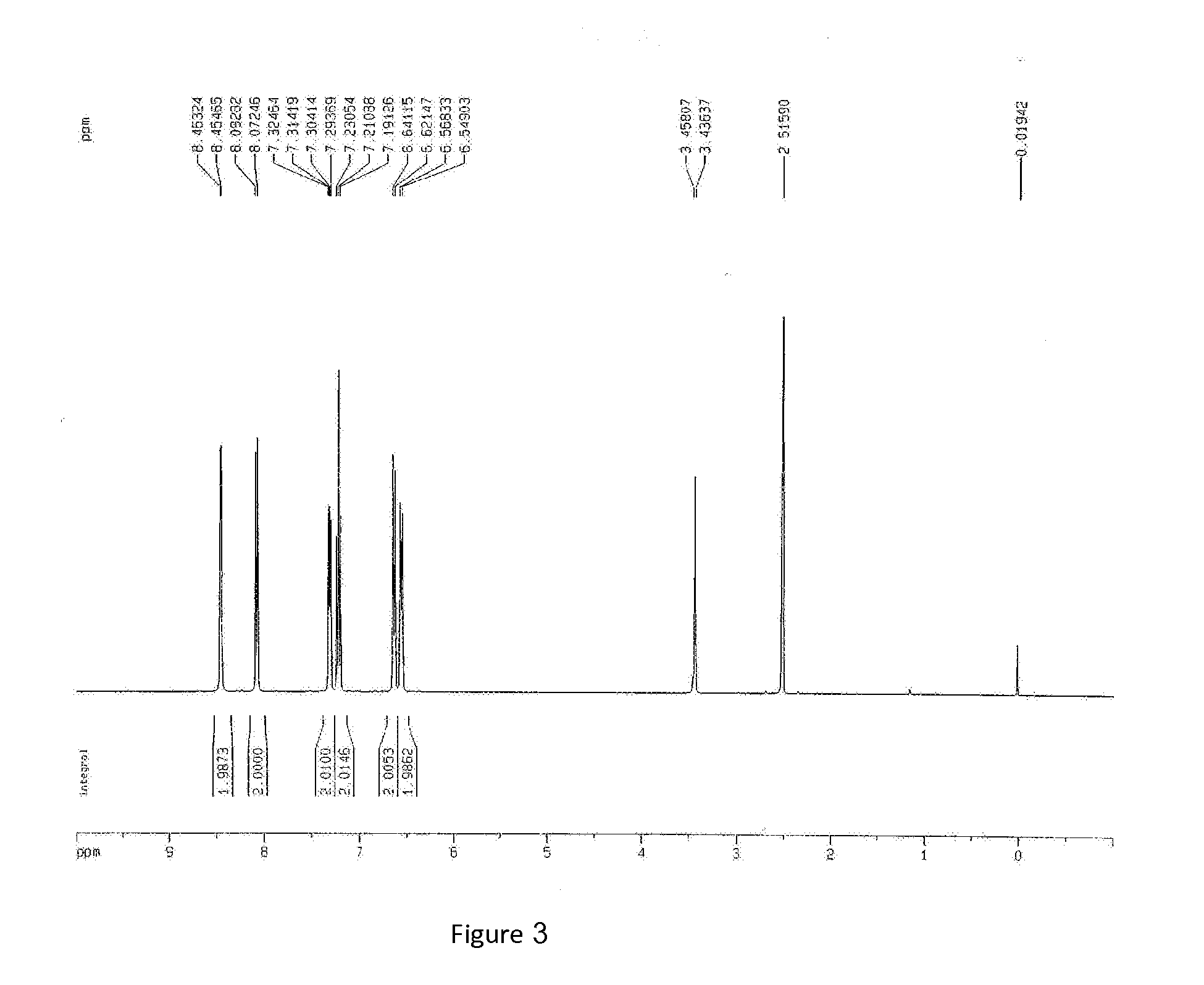Method for Preparation Metal Compounds of 8-Hydroxyquinoline or Derivatives
a technology of 8-hydroxyquinoline and metal compounds, which is applied in the direction of organic chemistry, group 3/13 element organic compounds, luminescent compositions, etc., can solve the problems of long production time, affecting the life of the device, and difficult to obtain the materials needed in other synthetic methods
- Summary
- Abstract
- Description
- Claims
- Application Information
AI Technical Summary
Benefits of technology
Problems solved by technology
Method used
Image
Examples
implementation example 1
Using Aluminum Isopropoxide as Raw Material to Synthesize 8-hydroxyquinoline aluminum
[0029]Add 120 ml toluene into four 500 ml boiling flask-4-neck, then put aluminum isopropoxide in the flasks, mixing with nitrogen and stirring until total dissolution and colorless and transparent liquid appears. Dissolve 8-hydroxyquinoline in 120 ml toluene through constant pressure dropping funnel, when start dropping, yellowish-green color appears immediately, and yellow sediments come out very quickly, after all 8-hydroxyquinoline solution is added, a large amount of sediments are produced. The temperature should maintain 60° C., and stop heating after 30 minutes of reaction, then cool it to room temperature, filtrate it, and a large amount of fibrous solids are obtained. Wash the solids twice with 150×2 ml toluene and 150×2 ml petroleum ether respectively, then vacuum drying them for 6 hours at 70° C., at last 17.5 g bright yellow products are obtained with yield of 95%.
implementation example 2
Synthesize bis(2-methyl-8-quinolinolato)-4-(phenoxyphenyl) Al
[0032]Add 4-xenol and 200 ml toluene in 1 L boiling flask-4-neck, and then fill in nitrogen and stir until all ingredients are dissolved. Drop aluminum isopropoxide into 120 ml toluene, white sediments appear immediately, all the aluminum isopropoxide is added in 1.5 hour, and then stir the mixture for an hour. Drop 2-methyl-8-hydroxyquinoline, yellowish-green sediments emerge immediately, reflux 16 hours after 1 hour when all the material is added. Then cool it, and yellowish solids are precipitated, filtrate the solids, white solids are gained. Purify the toluene, dry it, and the yield is 80%.
implementation example 3
Synthesize 8-hydroxyquinoline lithium
[0033]Add 120 ml methylene chloride in 250 ml boiling flask-4-neck; then add lithium hydroxide hydrate, and stir until white sediments appear. Within half minute after batch addition of 8-hydroxyquinoline, the mixture turns cream and the color becomes darker quickly, and after overnight reaction at 25° C., a large amount of yellow solids are obtained. Filtrate the yellow solids obtained; wash them twice with a total of 100 ml methylene chloride, and then dry them at 200° C. for 24 hours, the yield is 90%.
PUM
| Property | Measurement | Unit |
|---|---|---|
| temperature | aaaaa | aaaaa |
| temperature | aaaaa | aaaaa |
| temperature | aaaaa | aaaaa |
Abstract
Description
Claims
Application Information
 Login to View More
Login to View More - R&D
- Intellectual Property
- Life Sciences
- Materials
- Tech Scout
- Unparalleled Data Quality
- Higher Quality Content
- 60% Fewer Hallucinations
Browse by: Latest US Patents, China's latest patents, Technical Efficacy Thesaurus, Application Domain, Technology Topic, Popular Technical Reports.
© 2025 PatSnap. All rights reserved.Legal|Privacy policy|Modern Slavery Act Transparency Statement|Sitemap|About US| Contact US: help@patsnap.com



